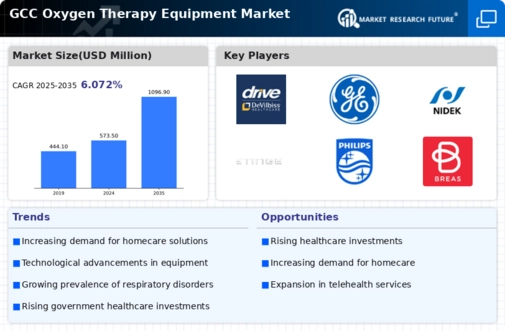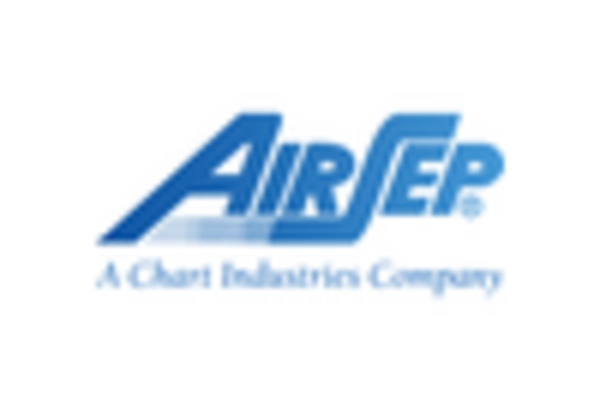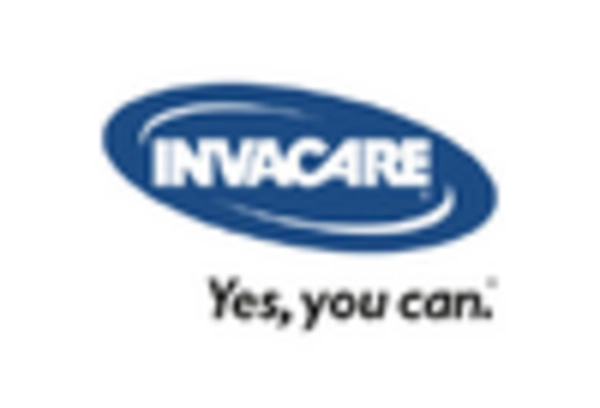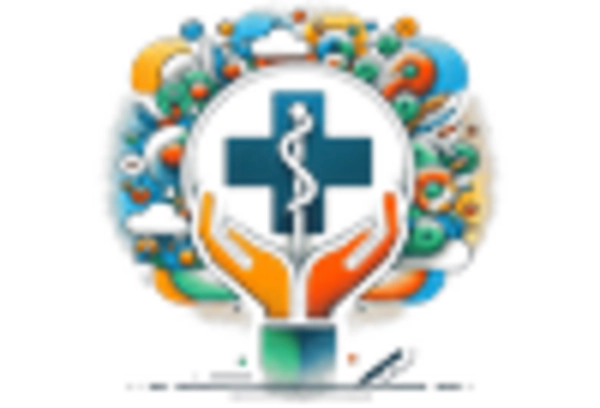Rising Awareness of Home Healthcare Solutions
The increasing awareness of home healthcare solutions is significantly influencing the oxygen therapy-equipment market. Patients and caregivers are becoming more informed about the benefits of receiving oxygen therapy at home, which is often more convenient and cost-effective than hospital visits. This trend is particularly relevant in the GCC, where there is a growing emphasis on patient-centered care. Home healthcare services are projected to grow at a CAGR of around 15% in the region, indicating a robust demand for home-based oxygen therapy equipment. As healthcare systems adapt to this shift, the oxygen therapy-equipment market is likely to see a surge in demand for home-use devices, further driving market growth.
Increasing Prevalence of Respiratory Disorders
The oxygen therapy-equipment market is experiencing growth due to the rising incidence of respiratory disorders in the GCC region. Conditions such as chronic obstructive pulmonary disease (COPD) and asthma are becoming more prevalent, leading to a higher demand for oxygen therapy solutions. According to health statistics, the prevalence of COPD in the GCC is estimated to be around 5-10%, which necessitates the use of oxygen therapy equipment for effective management. This trend is likely to drive the market as healthcare providers seek to improve patient outcomes through enhanced oxygen delivery systems. Furthermore, the aging population in the region is contributing to the increase in respiratory ailments, thereby further propelling the demand for oxygen therapy equipment. As a result, the oxygen therapy-equipment market is poised for significant expansion in response to these health challenges.
Aging Population and Increased Healthcare Needs
The aging population in the GCC is a significant driver of the oxygen therapy-equipment market. As the demographic landscape shifts, the number of elderly individuals requiring medical assistance, including oxygen therapy, is on the rise. It is estimated that by 2030, the proportion of individuals aged 60 and above in the GCC will reach approximately 15%. This demographic change is likely to lead to an increased prevalence of chronic respiratory conditions, thereby boosting the demand for oxygen therapy equipment. Healthcare providers are expected to focus more on tailored solutions for the elderly, which may include portable and user-friendly oxygen devices. Consequently, the oxygen therapy-equipment market is anticipated to grow in response to the evolving healthcare needs of the aging population.
Government Initiatives and Healthcare Investments
Government initiatives aimed at improving healthcare infrastructure in the GCC are significantly impacting the oxygen therapy-equipment market. Increased funding for healthcare facilities and the establishment of specialized respiratory care units are expected to enhance the availability of oxygen therapy solutions. For instance, the GCC governments have allocated substantial budgets for healthcare development, with some countries investing over $10 billion in healthcare projects. These investments are likely to facilitate the procurement of advanced oxygen therapy equipment, thereby improving patient access to necessary treatments. Additionally, public health campaigns focused on respiratory health are expected to raise awareness and drive demand for oxygen therapy solutions. Consequently, the oxygen therapy-equipment market is likely to benefit from these proactive measures taken by governments in the region.
Technological Innovations in Oxygen Delivery Systems
Technological advancements in oxygen delivery systems are playing a crucial role in shaping the oxygen therapy-equipment market. Innovations such as portable oxygen concentrators and smart oxygen therapy devices are enhancing the efficiency and convenience of oxygen delivery. The market is witnessing a shift towards more user-friendly and efficient devices, which are expected to capture a larger share of the market. For instance, the introduction of devices that integrate mobile applications for monitoring oxygen levels is likely to appeal to both patients and healthcare providers. This trend indicates a growing preference for technologically advanced solutions that offer improved patient management. As a result, the oxygen therapy-equipment market is anticipated to expand as these innovations become more widely adopted in the GCC region.

















Leave a Comment